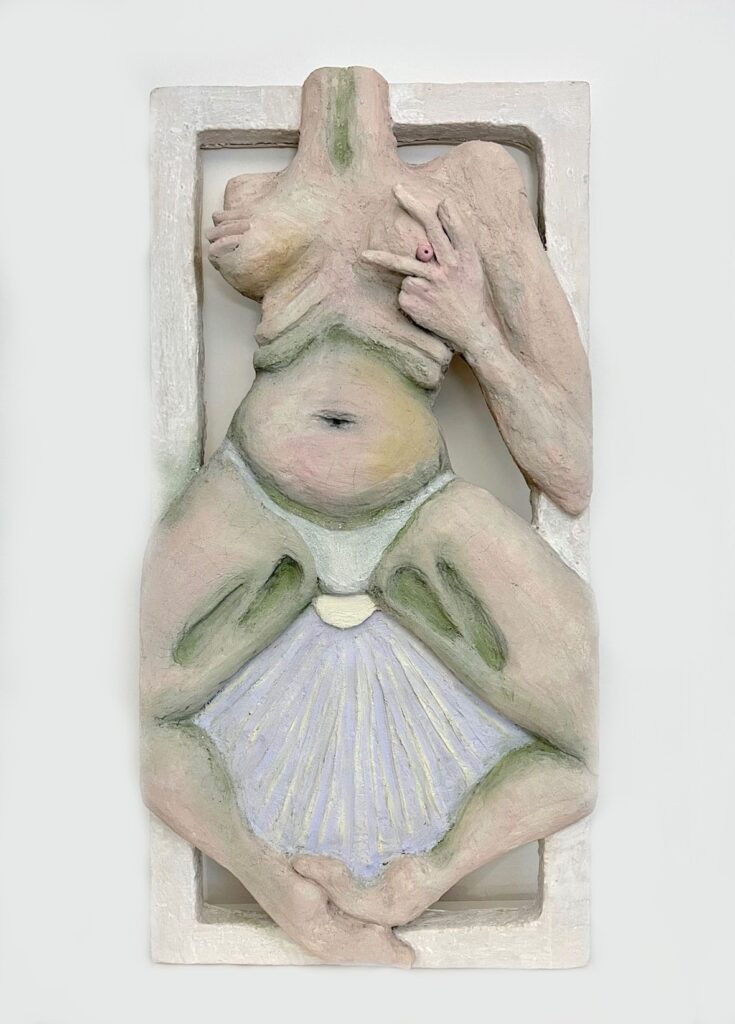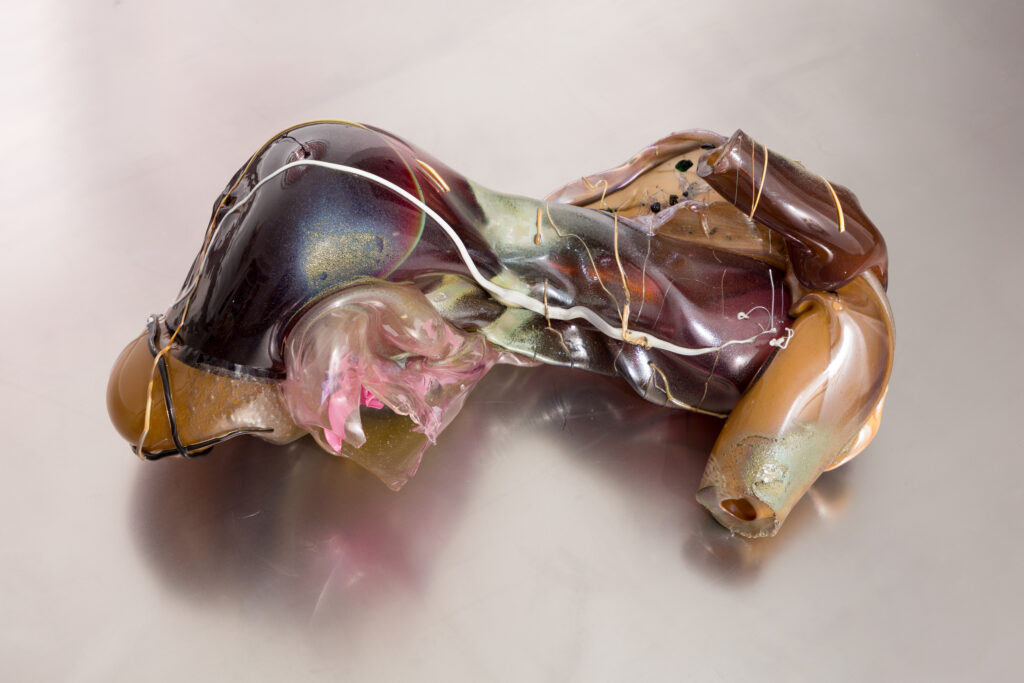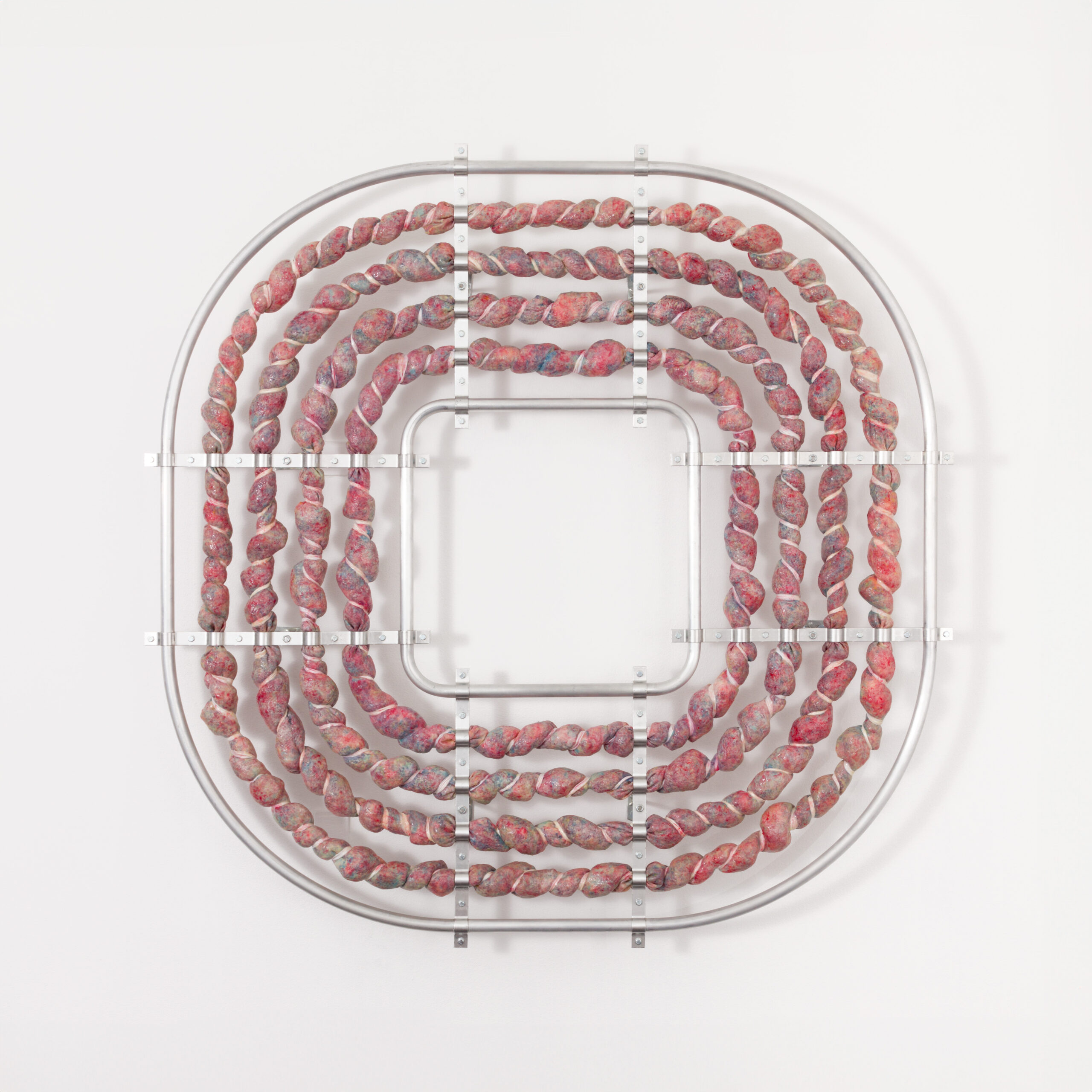Flesh on Flesh
A group show with Nanna Starck, Marie Munk and Maria Koshenkova
Inside out and outside in, the flesh surrounds me. A vessel of secrets, the flesh whispers to the touch. The body’s orifices are portals to our insides, where the soul’s essence unfolds. Beneath the surface, a labyrinth of hidden holes is revealed. Intestines are like coiled rivers, a hidden tapestry we can’t quite see.
“Flesh on Flesh” is an exhibition about the body, inside out. The pairing of three distinct artistic practices, with a common denominator in our relation to the body, creates a surplus of fleshiness where the connections are obvious, and the dissimilarities unfold generously. Nanna Starck, Marie Munk and Maria Koshenkova will be showing sculptural works in glass, steel, silicone, clay, and mixed media.
Nanna Starck
The relief is a central part of Nanna Starck’s artistic practice. She works with the body from the perspective of a dramatic narrative, based on ancient friezes and metopes, and uses these to address social structures and psychological states through grotesque imagery. The works comment on human psychology and emotionality by presenting grotesque bodily scenarios. In particular, the abject in human psychology and the framing of the body in unexpected compositions are focal points in the works. References are made to ancient art historical concepts, while she plays with the viewer’s emotions and imagination. The tension in her works often provokes laughter and disgust when she turns the body inside out and exposes bodily holes.
Marie Munk
Marie Munk is showing three recent works from her ‘Big Energy Links’ series – a series of wall-based artworks that draw inspiration from Marie’s large-scale work, “Big Energy,” from 2021. Each individual piece in the series represents a distinct segment within a larger, interconnected system that appears to traverse walls, much like water pipes or electrical cables. The fleshy, umbilical-cord-like structures, ensnared within the metal framework, exude an almost lifelike quality. They convey the impression of actively transporting something from one point to another, akin to how an umbilical cord conveys vital oxygen and nutrients from the placenta to the developing embryo within a mother’s womb. However, in this context, the cords are arranged in a more mechanistic, less humane manner, resembling cables or conduits. This transformation of the building they inhabit imbues it with the semblance of a colossal biological apparatus or a flesh-and-blood computer of sorts. It underscores the profound yet delicate connection between humanity and machine technology.
Maria Koshenkova
Maria Koshenkova’s work has always been inspired by anatomical elements. Her focus isn’t on the body as a complete entity, but rather on its unseen aspects. Her creations often feature shapes that suggest intestines or organ clusters, along with forms that are either completely abstract or resemble plants. In her use of glass, she captures the essence of the human condition – vulnerable, exposed, and disabled. Koshenkova’s intentions are to turn dramatic and violent life conditions into a poetic and strong experience – to give some kind of hope, as if the human organs after a car crash decide to go to a bar to have a drink. Her art crafts a realm where lived experiences and poetic expression meet, teetering on the edge of realism and abstraction. It’s a space where brutality is softened by the intricate beauty of the details. This ongoing exploration of softness versus harshness continually evolves in Maria Koshenkova’s artistic journey.
_
Image above:
Marie Munk, Big Energy Link 3, 2022
Photo: Tommaso Rampado


